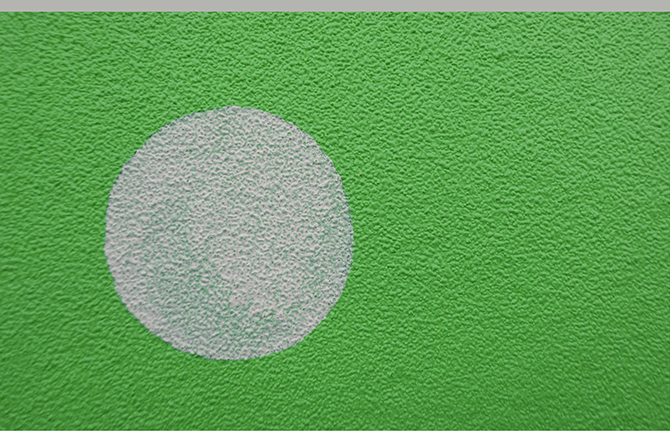
Using a House System to Support PBIS and SEL
January 10, 2024
Using Social-Emotional Learning to Transform the School and Its Families
January 10, 2024Rabbi Sheftel Skaist
In religious circles, the importance of social-emotional learning seems to have been well-established. A mechanech who knows child development once said, “First comes self-awareness, the bein adam l’atzmo; then comes healthy relationships, the bein adam l’chaveiro; only then can one develop a meaningful relationship with the Ribono shel Olam, the bein adam l’makom!” I recall seeing a picture in a Jewish periodical of a sign that said it in a nutshell: “Frumkeit without mentchlechkeit is not Yiddishkeit.”
However, even when the importance of social-emotional learning (SEL) is a clear and immediate priority, one challenge mechanchim may face is how to implement such learning in the classroom. Are there programs out there that are appropriate for young children in a yeshiva setting? This article shares our experiences using one such program. It includes a brief overview, how we implemented it, some feedback and anecdotes, and our general conclusions.
Finding An SEL Program
It all began with a request for emojis.
The staff was setting our kindergarten curriculum for the coming year. “So,” the morah asked, “do you have the basic emotions? I mean, like a chart of cute faces that I could use to help the boys begin to identify their feelings and emotions?”
“Of course,” I said. “Let me look.” I promptly Googled it.
This led to the discovery of a social-emotional program called A Little Spot SEL, by Diane Alber. Their website explains the fascinating backstory of the program which was developed by a creative and artistic parent (not an educator!) looking for a way to help her own children. We decided to give the program a try and purchased it.
Program Overview
The ‘A Little Spot’ materials include a set of books, plush toys, educator guides, flashcards, puppets, and stickers. Each book or set of books focuses on an emotion or group of emotions simplified into a ‘spot’. The books have two children who interact with each other and with each ‘spot’, providing situations, explanations, and strategies.
The books teach about seven basic emotions: happiness, sadness, anger, anxiety, love, confidence, and peacefulness. There is also a ‘scribble’, an eighth spot, that stands for the confusing mix of emotions that everyone feels sometimes.
The plushie spots are little round mentchies with specific names, colors, and facial expressions. There is also an educator guide filled with simple lessons, fun hands-on activities, helpful photographs, discussion and writing prompts, and over 100 printables and worksheets.
The program begins with the basic emotions appropriate for 4-year-olds. It then becomes more sophisticated as children mature and become able to understand the many variations and nuances of more complex emotions.
The Implementation
The program is presented within the school or home culture. Below are excerpts from our weekly newsletter written by the kindergarten morah. These provide a sense of how we implemented the program over the year and are prefaced with short explanations to supply context.
The first step was for us to introduce the program to the boys:
“This week, we started our exciting new program called A Little Spot of Feelings and Emotions. We introduced flashcards and the boys told Morah what they thought each emoji was feeling. They labeled them happy, sad, very happy, etc. We are now learning new vocabulary relating to feelings. The boys will soon be able to identify and verbalize their feelings.
“We read the book The Scribble Spot. A scribble spot is when our emotions or feelings are tangled together. It’s sometimes hard to know what we are feeling. The scribble spot helps us untangle that so we can go through all the different colored spots and know what each one is.”
Implementing a daily check-in helped our talmidim use their new social-emotional vocabulary. It also allowed the morah to take the boys’ emotional ‘temperature’ at the beginning of each day:
“We have a daily emotion check-in. During the first circle time of the day, everybody has a chance to check in on how they are feeling and share why they are feeling that way. The boys are building their ‘feelings vocabulary’, giving voice and words to their emotions.”
We discovered simple ways to teach important self-awareness skills even to such young children:
“We played a game acting out different emotions. Each boy received a flashcard featuring a different emoji. They used a mirror to try to make the same face as the card. The other boys had to try to read the boy’s expression. Finally, each boy would tell us a scenario when they might feel such a feeling. This was a phenomenal opportunity for the boys to learn that others can read your face and tell how you are feeling. When we are feeling different strong emotions, others can generally see it on our faces. We should look at other people’s faces to try to see how they are feeling.”
The program provided many opportunities for home/school connection and collaboration:
“We made puppets to bring home to be able to demonstrate different scenarios and vocabulary that we are learning in school. Rabbi Skaist also made a booklet for parents as a reference guide to help follow along with our program.”
“The boys made a Worry Box for the classroom. Each boy made an additional one to take home. If we feel worried or anxious, we can draw a picture of it, and when it’s a good time for Morah, Mommy, or Tatty, we can read about it together and discuss it. We can brainstorm how to get help and not be worried about it.”
We aligned different Jewish books for children focusing on middos with the program. One example:
“We learned that if we feel the gray Anxiety spot, we want to replace it with the green Calm spot which makes us feel peaceful and good. We finished the gray spot with the book, “My Friend, the Worrier”!”
The introduction of different emotions can easily be aligned with Yomim Tovim and the Jewish calendar. This was taught before a fast day:
“We continued learning about Sadness, the Blue Spot. Morah had a heart-shaped sponge. Each boy got to hold it and feel that it was light. This is how we feel when our hearts are happy. When we placed the heart sponge in a cup of water, it became heavy. That is how we feel when we are sad. We can feel sad if someone says something or does something that makes us sad. Each boy then held the sponge. Drops of water dripped out of the sponge. The drips are like tears. We sometimes cry when we feel sad. Tears help us move sadness out of our hearts. Tears help us remove our SAD feelings and make room for HAPPY feelings.”
The activities can be presented using terminology relating to mussar and middos. Here is an example of a spot presented with a Torah hashkafa:
We love the yellow spot called Happiness! It makes us feel good and joyful. When we help each other, it makes both of us feel happy! It’s like a link in a chain. With every chesed, we are creating a long chain that keeps growing. We showed this with a tissue box activity. One tissue helps bring out another…. So, too, by doing a chesed, we can help bring happiness to other people and friends!
FEEDBACK & ANECDOTES
The morah reported that the classroom activities provided a high level of student engagement. She felt that the activities allowed her to bring theoretical concepts down to the boys’ level of understanding using concrete examples. Throughout the year, compelling student behaviors and responses gave us the feedback we needed to confirm that the program was having the desired effect.
In one instance, the boys took turns putting the mini orange spot on their shoulders, listening to what Confidence Spot was telling them, and then sharing it with the class.
“The Confidence Spot whispered to me…
Yosef — …I can build something that seems hard!”
Yehuda — …I can hold someone’s hand!”
Yanky — …Even when I think I can’t, I can!”
Zev Aryeh —…I can do anything!”
Danny — …I can clean up!”
Yossi — …I can help a friend!”
In another instance, one of the boys checked in during morning circle time with the word Sadness. Morah asked, “Why are you feeling sad?” He replied, “I’m feeling blue because I never got to go to the Bais Hamikdash!”
There were many times that talmidim helped themselves and each other with their emotions. Once, a boy was observed standing over a garbage can while making hand motions as if throwing something; it looked like something one might see at tashlich. Morah asked what he was doing. He responded, “I was getting frustrated with my rosh chodesh crown and was about to rip it up. But instead, I decided to throw out my frustration.” He finished ‘tossing out’ his frustration and returned to the table to complete his project!
Another time, a boy started to get angry because someone accidentally broke his tower of blocks. His friend rushed over to him and said, “You’re getting a red spot (anger). I’m going to breathe together with you so you can get a green spot (calm).” They did a breathing exercise together and the boy calmed down!
Here is feedback from one of our school parents:
I appreciate the school using this program. In general, incorporating emotional health and well-being is needed… it impacted my son and helped him with verbalizing and understanding his feelings. At the beginning of the year, he would easily get frustrated and shut down. The program gave him some tools to verbalize what he was feeling and express it. I think it also showed him that emotions and feelings are okay and, as the boys get older, it will allow them the opportunity to be vocal with each other. I think this program… should be a big talking point when recruiting new families.
CONCLUSIONS
There may be other programs out there, but we found The Little Spot to be a good fit for our yeshiva. We were surprised at how impactful this program was on our talmidim. It helped us accomplish our goals to teach the boys to associate emotions with facial expressions and words, identify and express their feelings appropriately, and learn how to manage strong feelings. We would recommend this program for yeshiva use since it is developmentally appropriate, easy to use, relatively inexpensive, and in our experience, relatable and fun!
Rabbi Sheftel Skaist has been in chinuch for over 25 years. He holds a semicha in safrus and a Masters degree in Educational Administration and Supervision. Rabbi Skaist has experience teaching children of all ages and adults in limudei kodesh and limudei chol, with strong organizational skills, creativity, and a warm personality. He has established, managed, consulted, and mentored in various yeshivos, working with and empowering children and adults to develop in their respective roles as talmidim and mechanchim.

